 |
Langley Research CenterTurbulence Modeling Resource |
Jump to: SSTm Results, SSG/LRR-RSM-w2012 Results, K-kL-MEAH2015m Results
Return to: 2D NASA Wall-Mounted Hump Separated Flow Case Intro Page
Return to: Turbulence Modeling Resource Home Page
2D NASA Wall-Mounted Hump Separated Flow Validation Case
SA Model Results
Link to SA equations
Note this case can also be run on grids WITHOUT a plenum; see:
2D NASA Wall-Mounted Hump Separated Flow Validation Case (no plenum) SA page.
Note that thorough
grid studies were not performed for validation cases such as this one.
Some effort was made to ensure reasonable grid resolutions, but there may still be
small noticeable discretization errors. Therefore, these validation results shown should be considered
representative, but not "truth."
The plots shown compare the SA results from two independent
CFD codes: CFL3D and FUN3D, along with experimental data.
The CFD codes predict the flow separation to occur at x/c = 0.660 and reattachment near x/c = 1.27-1.28
(in experiment these were 0.665 and 1.1, respectively).
Both CFL3D and FUN3D used freestream value of the SA turbulence field variable (relative to laminar)=3.
Please read note 5 on Notes on running CFD page.
These results are from the "fine" grid from the CFDVAL2004 workshop (210,060 points).
Note that for this particular case the SA model converged somewhat poorly toward a steady-state result in both codes.
There were very small oscillations in integrated forces that decreased in magnitude only very slowly.
The computations were stopped when the solutions were deemed "steady enough" in the sense that
further iterations did not produce any noticeable change in plotted values.
As seen above, both codes gave results that were very close on this grid.
Note that these are compressible code results at "essentially incompressible" conditions of M=0.1.
There may be a very small influence of compressibility.
Also note that the CFD's reference pressure is different from the experiment (to attain the same reference dynamic pressure);
so a shift is necessary to align the Cp levels.
The data files from CFL3D are given here:
nasahump_cfl3d_cp_sa.dat,
nasahump_cfl3d_cf_sa.dat,
nasahump_cfl3d_vel_sa.dat (corrected 07/08/2022),
nasahump_cfl3d_uv_sa.dat,
(Note: the profiles have been interpolated using Tecplot software onto pre-set points, that may or may
not correspond to the actual grid points or grid cells used in the computation.)
A typical CFL3D input file is:
nasahump_cfl3d_typical_sa.inp.
A typical FUN3D input file is:
fun3d.nml_typical_humpwithplenum_sa.
Jump to: SSTm Results,
SSG/LRR-RSM-w2012 Results,
K-kL-MEAH2015m Results Return to: 2D NASA Wall-Mounted Hump Separated Flow Case Intro Page Return to: Turbulence Modeling Resource Home Page
Recent significant updates: Responsible NASA Official:
Ethan Vogel
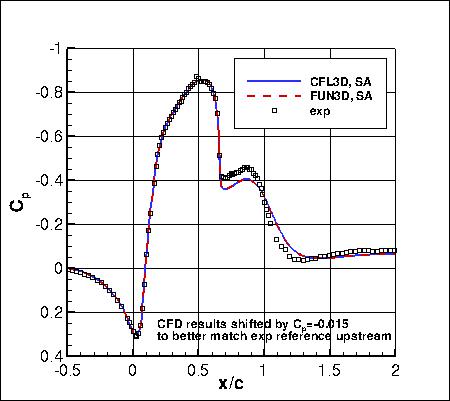

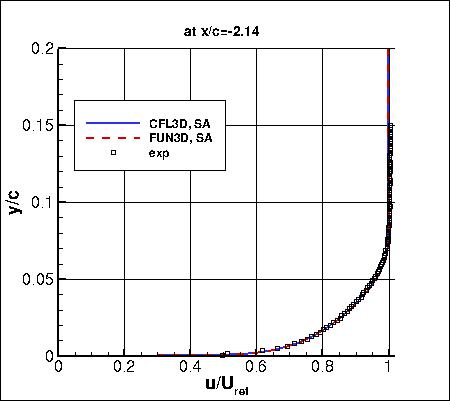
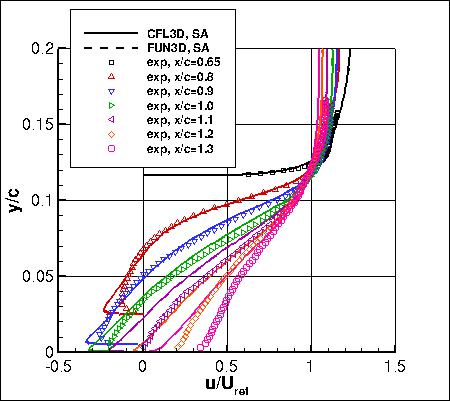
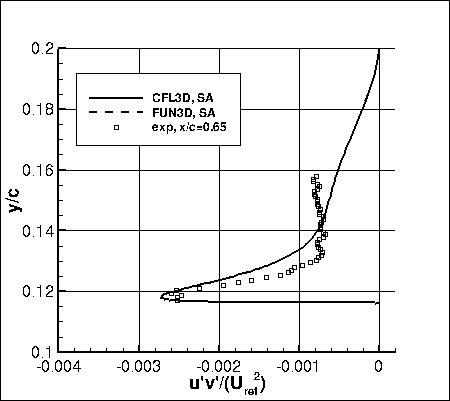
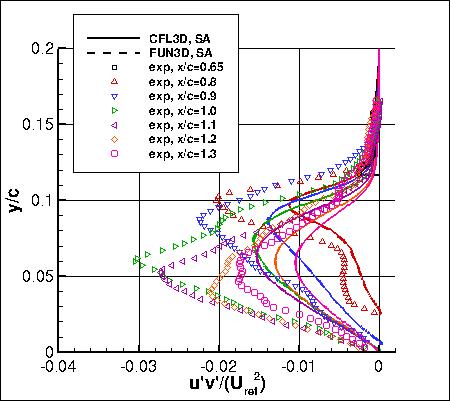
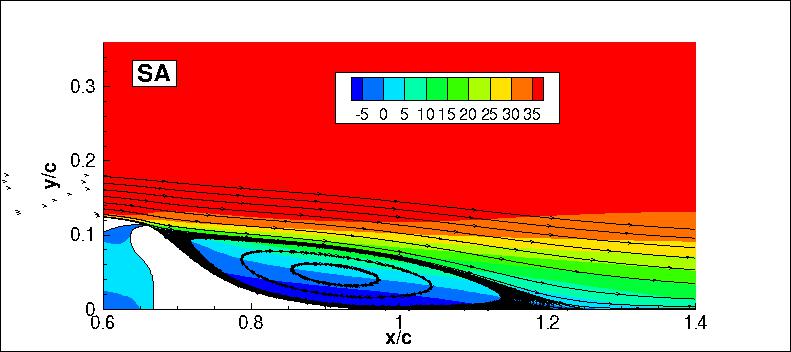
07/08/2022 - corrected velocity profiles in posted CFL3D "vel" file (u/a_ref was mistakenly reported instead of u/U_ref)
Page Curator:
Clark Pederson
Last Updated: 03/17/2025